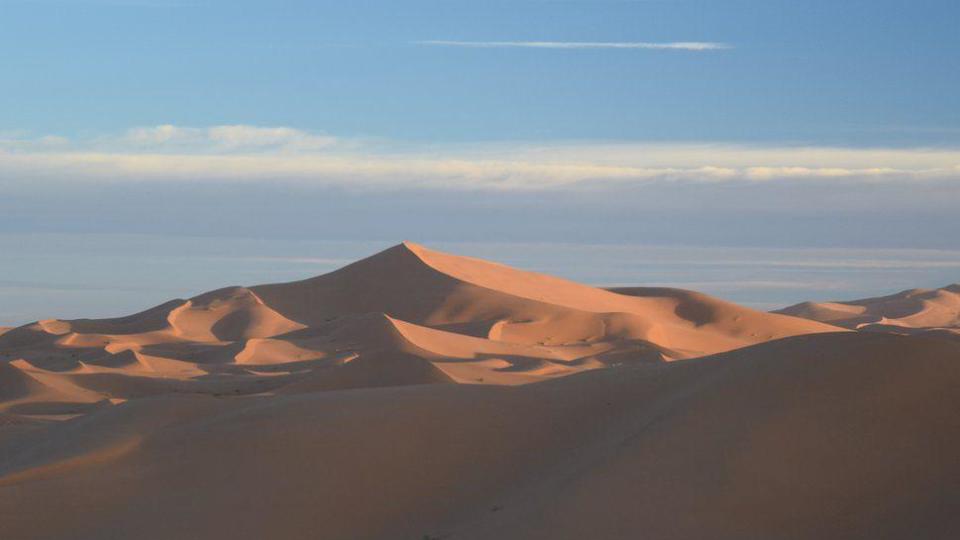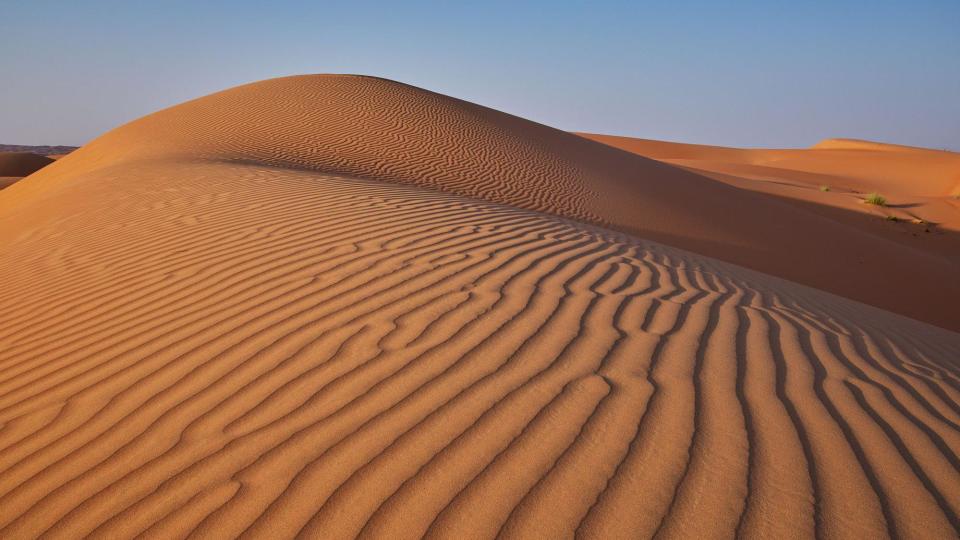
For the first time, scientists have been able to calculate the age of one of the largest and most complex types of sand dunes on our planet.
Star dunes, or pyramid dunes, They are named for their distinctive shapes and reach hundreds of meters in height.
It is found in Africa, Asia, North America, as well as on Mars, but experts have not previously been able to determine the date of its formation.
Now, a team of scientists has discovered that a sand dune called Lalla Lalia in Morocco was formed 13,000 years ago.
50 cm per year
Pyramid sand dunes are formed Headwinds That changes direction.
Understanding their age allows us to better understand those winds and reveal the climate at that time, says Professor Geoff Dowler of Aberystwyth University in the UK, who published the research with Professor Charles Bristow of Birkbeck University.


Lala Lalia (an original Berber or Berber name meaning the highest sacred point) is located in The Sand Sea in Erg Chebbi, southeastern Morocco.
he have 100 meters high and 700 meters wide With a series of beam weapons
After its initial formation, it stopped growing for about 8,000 years and then expanded rapidly in the last few thousand years.
“These results will likely surprise a lot of people, as we can see how quickly this huge sand dune formed, which… It moves across the desert at a rate of 50 cm per year“, Add.
Like an old photography lab
To determine the age of these Moroccan dunes, researchers used a technique called… Dating scintillation.
This method calculates the last time the sand grains were exposed to daylight.
The sand samples were taken in the dark, and analyzed in the laboratory under dim red light conditions, similar to those in an old photographic workshop.


Doller describes the mineral grains in the sand as “small rechargeable batteries,” because they store energy inside the crystals that comes from radioactivity in the natural environment.
The longer the sand remains buried underground, the more it is exposed to radioactivity, and the more energy it accumulates.
When the grains are exposed in the laboratory, they release energy in the form of light and scientists can calculate their age.
“In our dark laboratory, we see the light coming from these sand grains. The brighter the light, the older the sediment grains are and the longer they were buried,” the researcher explains.
Another example of these huge dunes is the Colorado Star Dune in the United States, which is the tallest sand dune in the country, measuring 225 meters from base to summit.
Climbing these sand dunes is hard work, explains Doller. “When you go up, you take two steps up and one step back,” he says. “But it's worth it: it's so beautiful from the top.”
You may also be interested | On video
A man sandboards in the beautiful Atacama Desert

“Proud web fanatic. Subtly charming twitter geek. Reader. Internet trailblazer. Music buff.”

:quality(85)/cloudfront-us-east-1.images.arcpublishing.com/infobae/TEQF6EONZRFGLLLDIDD4L2O4EE.jpg)

:quality(75)/cloudfront-us-east-1.images.arcpublishing.com/elcomercio/XU32LRAEZFDDPNVHLFU3CKVBYY.jpg)



More Stories
How to create 3D videos with my iPhone, it will be very useful even for your business
NASA discovers an anomaly in the Earth’s magnetic field that could have serious consequences for humans
Can the Earth be divided into two parts?